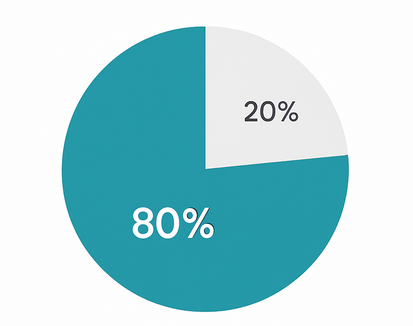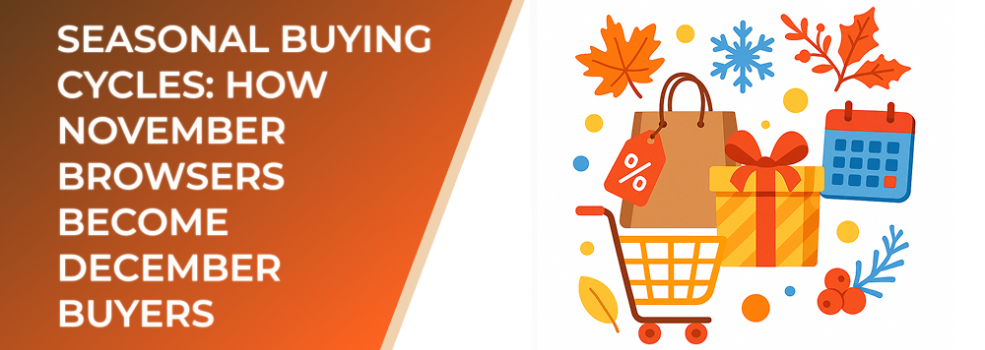Holiday-driven shopping cycles tend to build gradually. November is browsing season: consumers compare prices, evaluate brands, and save wishlists. Studies show that nearly 70 percent of holiday shoppers begin researching products before December, yet only around 30 percent make their final purchase during November. This early-phase behavior reflects a planning mindset driven by upcoming sales, gift lists, and budget timing.
December, on the other hand, is the action phase. Roughly 55 to 60 percent of total holiday purchases occur between December 1 and December 20. Factors such as gift deadlines, seasonal discounts, and social influence accelerate purchasing decisions. Buyers who hovered over product pages in November often convert once emotional urgency increases.
Why November Behavior Predicts December Conversions

80% of holiday shoppers researched or browsed prior to purchase
Several behavioral triggers explain the shift:
-
Gift-driven intent: Many shoppers delay purchases until they finalize their lists or receive requests from others. Browsing early helps them narrow options.
-
Budget cycles: Pay periods, bonuses, and end-of-year financial planning push purchases into December. Over 40 percent of consumers report allocating their main holiday spending after December 1.
-
Promotional expectations: Shoppers anticipate December-specific deals. Approximately 60 percent expect better final sales in early December than in November.
-
Return reassurance: Close-to-holiday return policies and extended guarantees reduce buyer hesitation.
The Retargeting Power of Seasonal Intent
Audiences who browse in November carry high intent, even if they don’t yet purchase. This makes them prime retargeting opportunities during the first two weeks of December. Data shows that warm audiences convert at rates up to 2.5 times higher than cold audiences during holiday periods.

Approximately 49% of shoppers plan to do all or most of their holiday shopping in December
Understanding this cycle allows marketers to:
-
Segment November visitors as a priority warm audience.
-
Serve December-specific creatives addressing urgency and gifting.
-
Reinforce trust with reminders about shipping cutoffs and returns.
-
Highlight product comparisons or bundles based on previously viewed categories.
Building Campaign Flows Around the Seasonal Curve
To capture December buyers effectively, marketers can activate structured seasonal flows:
-
Awareness and Comparison Phase (Early–Mid November)
-
Showcase product strengths and unique selling points.
-
Provide category-level education.
-
Run soft-touch traffic and engagement campaigns.
-
-
Intent-Building Phase (Late November)
-
Capture browsers into warm audiences.
-
Promote gift guides, best-sellers, and holiday bundles.
-
Use browse- and product-view-based segmentation to map intent.
-
-
Conversion Phase (Early–Mid December)
-
Emphasize shipping deadlines, urgency, and social proof.
-
Retarget November visitors with personalized creatives.
-
Highlight product benefits, guarantees, and limited-time offers.
-
-
Late-Season Recovery (December 18–24)
-
Offer digital gift cards or last-minute picks.
-
Target repeat visitors who still haven’t purchased.
-
Use simple value-driven messaging focusing on instant delivery options.
-
Useful Statistics for Seasonal Planning
-
Nearly 50 percent of annual holiday-related online traffic occurs in November, but the majority of transactions happen in December.
-
Retargeting audiences based on product views from November can increase December conversion rates by 150 to 170 percent.
-
Over half of consumers open gift guides during the second half of November but complete purchases in the first half of December.

